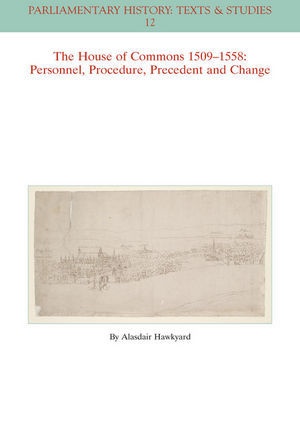Ulteriori informazioni
The House of Commons 1509-1558 offers readers a groundbreaking examination of the role and significance of the British House of Commons during the Tudor period.
* Utilizes new scholarship, archival research, and never-before-published images to enhance our understanding
* Details all aspects of the institution, including elections and electoral practice, membership, organization, the House in session, and legislation
* Addresses innovations in the conduct and management of the House during this time, such as the introduction of divisions and increasing bureaucratization
* Demonstrates the turbulent nature of the House during the Tudor age and reevaluates the nature of political opposition
Sommario
Abbreviations
List of Tables and Maps
List of Figures
Preface
Introduction
Chapter 1. Elections and Electoral Practice:
Summoning a Parliament
Circular Letters
Other Royal and Conciliar Letters
Nominations
Canvassing
Electoral Law
Enfranchisement and Disfranchisement
Shire Elections
Urban County Elections
City, Borough and Town Elections
The Franchise in the Urban Counties, Cities, Boroughs and Towns
Cities, Boroughs and Towns and Lordship
Sheriffs and Other Returning Officers
Election Returns, Indentures and Schedules
Witness Lists on Election Indentures
Alterations to Election Returns, Indentures and Schedules
False Returns
Overturned and Quashed Elections
The Assembly of the House, the Receipt of Writs and the Calling of Names
Crown Office Lists
Committees for Returns
By-elections
Chapter 2. The Members:
The Body Politic
The Size of the House
Social Background
Knights and Knightings
Ennoblement
The Associates of Peers
Education
Writers and Translators
Members' Personal Notes,Records and Memory
King's Councillors and Privy Councillors
The Royal Household
Other Royal Servants and Officers
Military and Naval Experience
Ecclesiastical Administrators, Lay Deans and Ordained Priests
Lawyers
Merchants, Manufacturers and Traders
Experience in County Government
Experience in Urban Government
Religion
The Acquisition of Church Property
Misfortune and Notoriety
Accommodation and Dining
Clothing and Accessories
Servants and Attendants
Wages
Depictions
Chapter 3. Organisation:
Meeting Places
Times of Business
Adjournments
Inter-sessional Prorogations
Seating and Hierarchy
The Speaker
Officers of the House
The Records of the Commons
Chapter 4. The House in Session:
The Opening of Parliament
The Speaker's Petitions:
1. Freedom of Access by the Speaker to the Sovereign
2. The Apology by the Speaker to the Sovereign
3. Liberty of Speech
4. Privilege from Arrest
The House of Commons as a Court
Discussing and Reporting Business
Attendance
Outside Intervention
Visitors
Conferences with the Lords
The Presence of Members at Events outside Parliament
The Royal Assent
The Closing of Parliament
On Leaving
Chapter 5. Legislation:
The Preparation of Petitions and Bills
The House of Origin for Bills
Procedure on Bills
The Interests of Members and Constituencies
Speeches
Debates and Opposition
Suitors, Counsel and Defendants at the Bar
Influences on Members
Committees
Amendment and Engrossment
Voting: Acclamations and Divisions
The Bearing of Bills to the Lords
The Collection of the Subsidy Bill from the Upper House
Appendices:
1. Dates of Parliaments
2. The Parliament of September 1553
3. King Philip
4. New Constituencies
5. By-elections
6. Additional Members and
Info autore
Alasdair Hawkyard is a Fellow of the Society of Antiquaries and the Royal Historical Society. He was formerly Co-editor and Principal Research Assistant on the 1509-1558 section of the History of Parliament. His long-standing interest in architectural, social, and political history is reflected in a range of articles published in
Parliamentary History as well as other academic journals. He is the co-editor of
Sir Thomas Duppa's Commonplace Book (Wiley Blackwell, 2015) and co-author of
The Counties of Britain: A Tudor Atlas by John Speed (1988).
Riassunto
This is a ground-breaking examination of the role and significance of the British House of Commons during the Tudor period. Written by a noted scholar, it utilizes new scholarship, archival research, and never-before-published images to enhance our understanding of the period.

